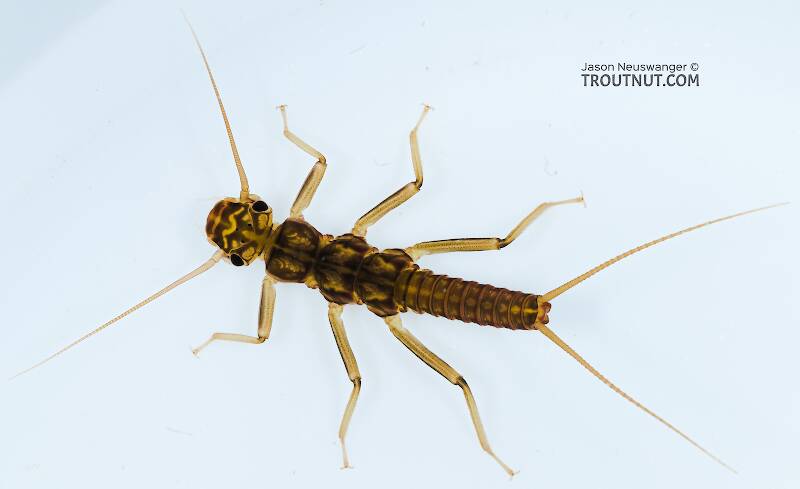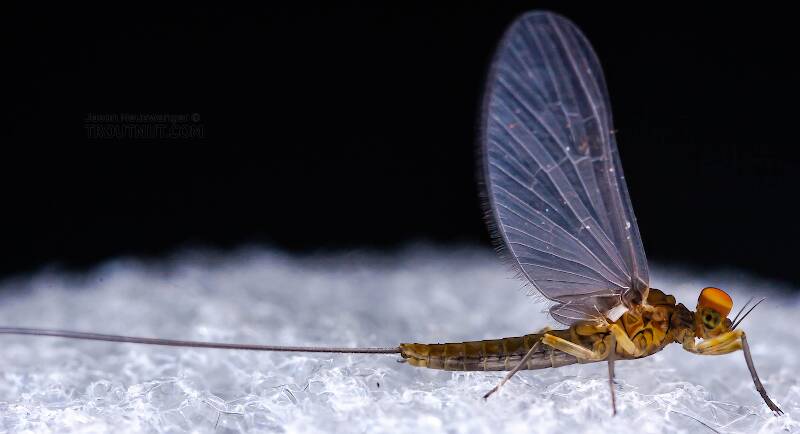
Blue-winged Olives
Baetis
Tiny Baetis mayflies are perhaps the most commonly encountered and imitated by anglers on all American trout streams due to their great abundance, widespread distribution, and trout-friendly emergence habits.
Featured on the forum

Troutnut is a project started in 2003 by salmonid ecologist Jason "Troutnut" Neuswanger to help anglers and
fly tyers unabashedly embrace the entomological side of the sport. Learn more about Troutnut or
support the project for an enhanced experience here.
Male Stictochironomus Midge Adult Pictures
This midge and several like it, including a female I also photographed, hatched from larvae which were living in some fine mud I'm using as substrate in my bug-rearing aquarium.
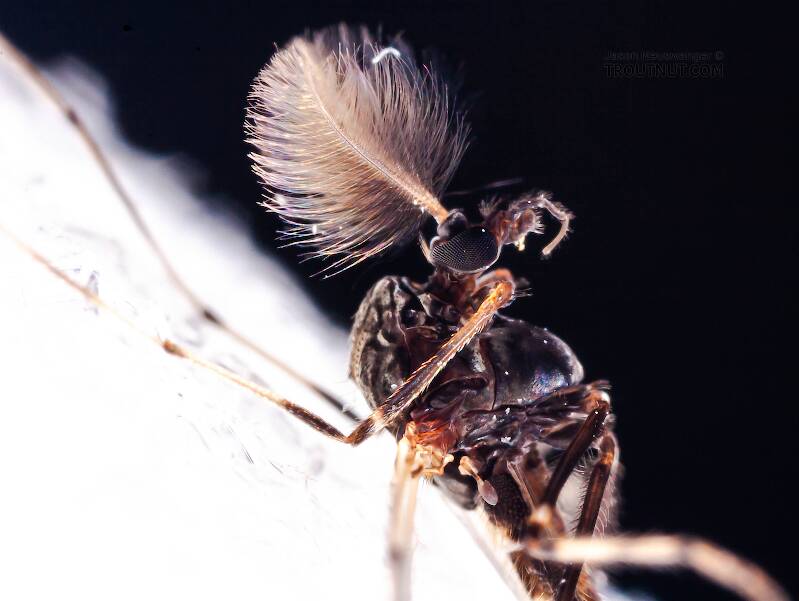
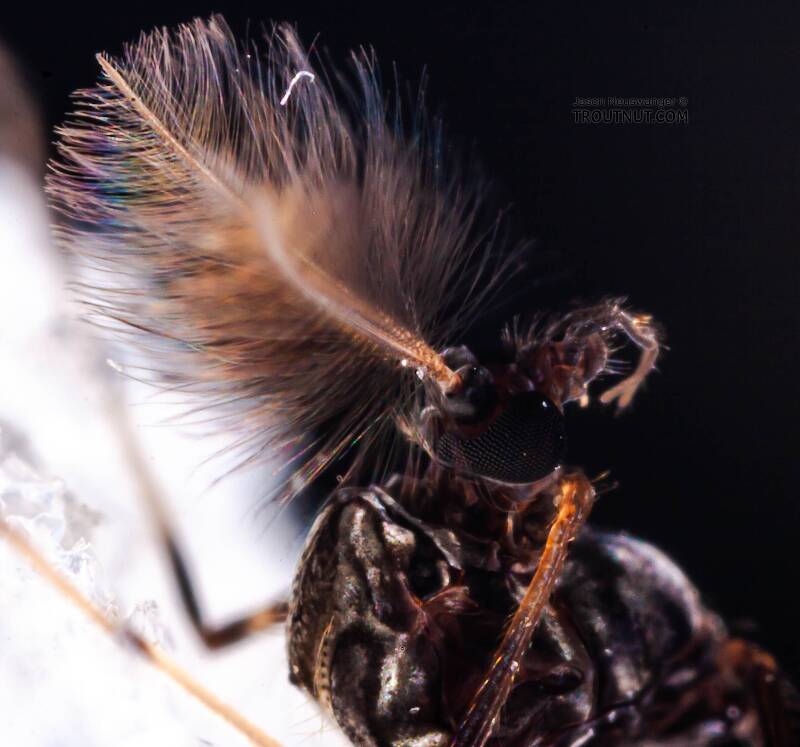
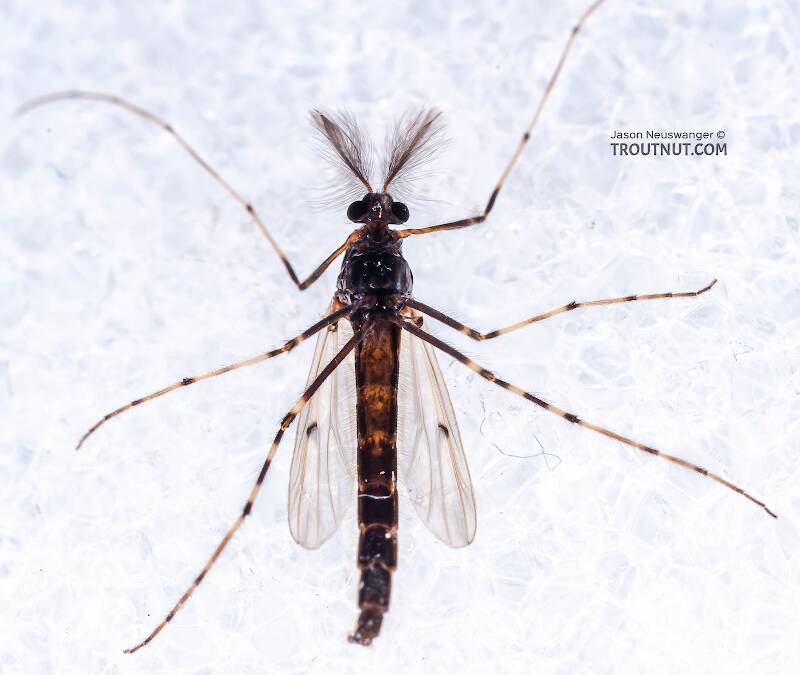
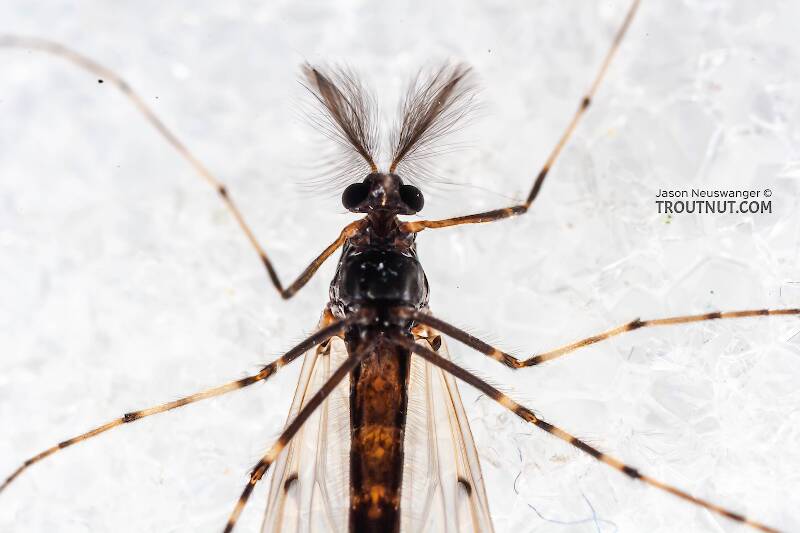
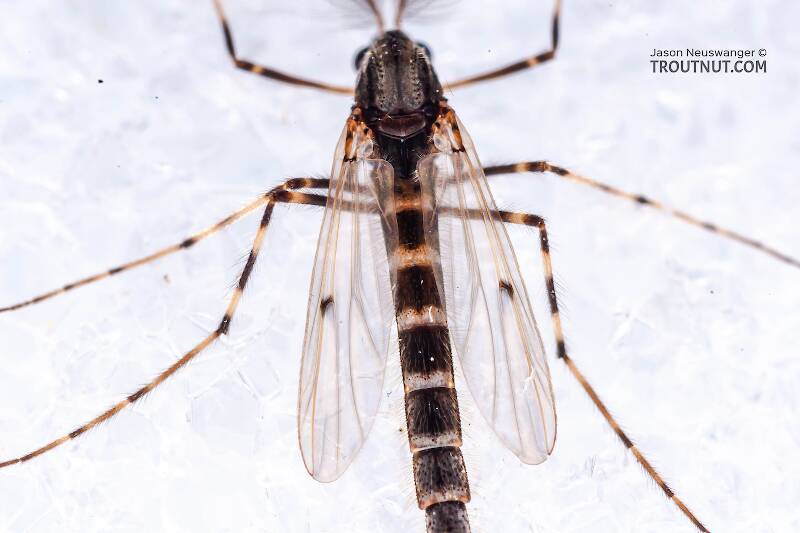
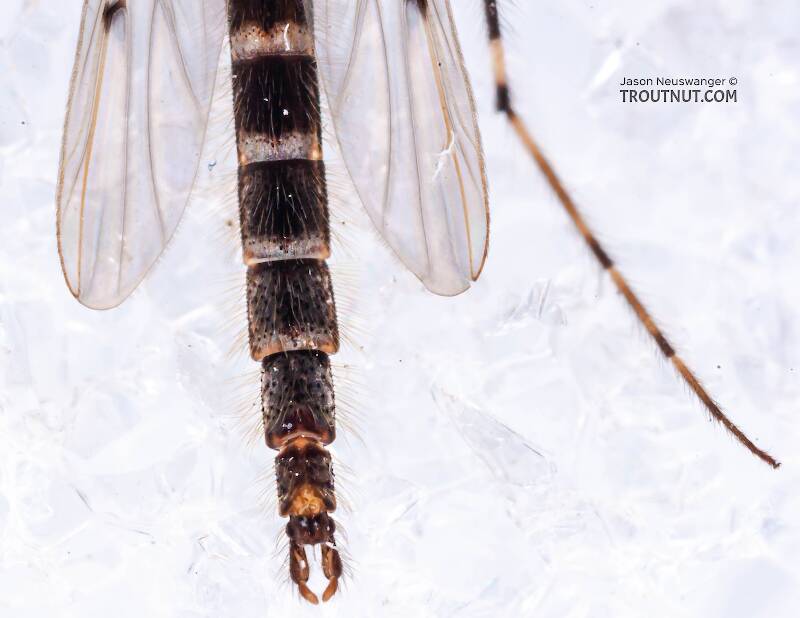
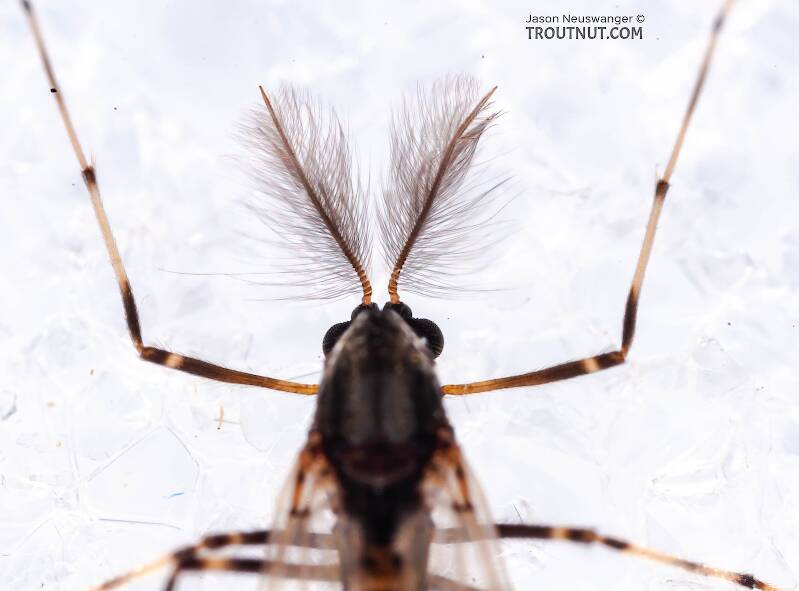
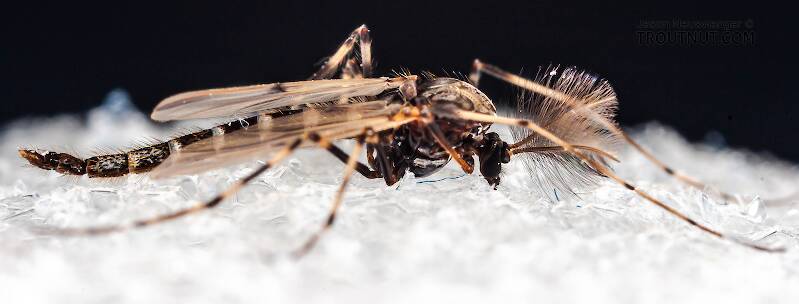
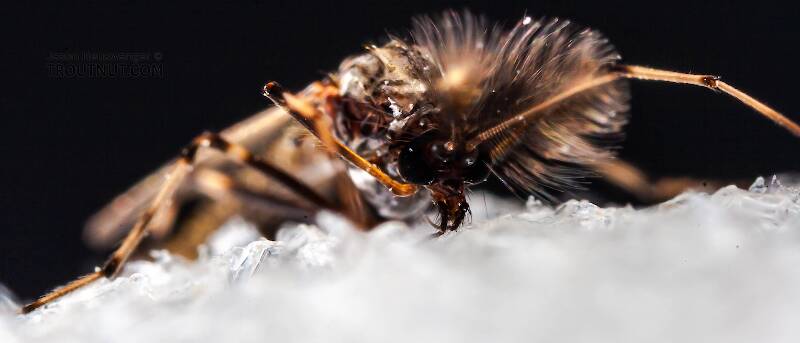
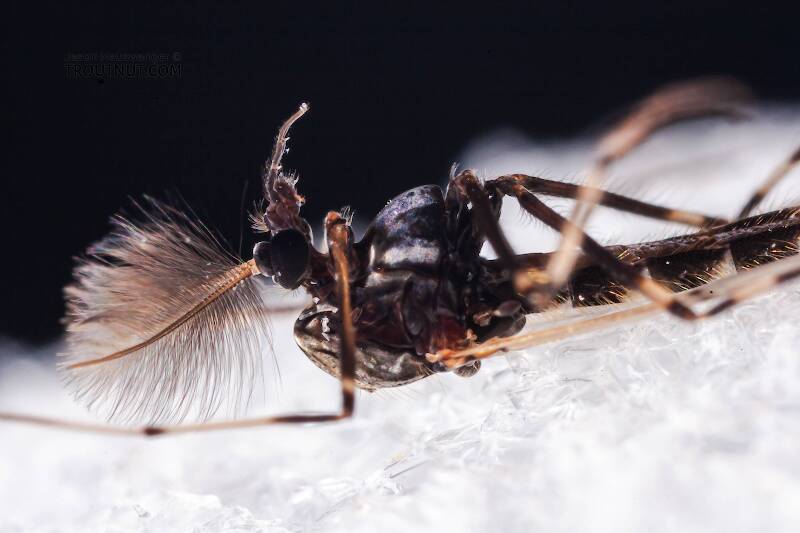

This midge was collected from Mystery Creek #62 in New York on April 10th, 2007 and added to Troutnut.com by Troutnut on April 10th, 2007.
Discussions of this Adult
chironomids-East versus West
3 replies
Posted by Joec on Mar 21, 2008
Last reply on Aug 12, 2012 by Taxon
Spring can't arrive soon enough...after ice-out streamer fishing and before the high water levels on moving water venues become more reasonable, I love to fish chironomid imitations in ponds. In ponds containing few forage fish, this begins before the ice goes out entirely. My question is simple: why are chironomid species in the East so much smaller than out West? I have fished the Kamloops area of BC which is, of course, world renown for huge (size and quantity)chironomid hatches and the difference is unbelievable. I suspect it has to do with lack of fertility in my home waters, still or otherwise. Can anyone help?
First spoils of my bug-rearing aquarium
19 replies
Posted by Troutnut on Apr 10, 2007
Last reply on Jan 20, 2008 by Troutnut
I returned from a weekend out of town to find that several midges had emerged from my bug-rearing aquarium. I never specifically put them in it in the first place; apparently, they were embedded in the river silt I used as the substrate for part of it.
I'm pretty sure this one and the other specimen belong to the same species, and I'm guessing the variation in antennae form is a gender difference. It's kinda neat. The antennae on the male seem to be made to be imitated with CDC, except that they're about 100 times too small.
In fact, from the ruler picture, you can see that the whole body of this midge is thinner than a size 18 dry fly hook. I'm not sure how a griffith's gnat is supposed to imitate such a thing.
I'm pretty sure this one and the other specimen belong to the same species, and I'm guessing the variation in antennae form is a gender difference. It's kinda neat. The antennae on the male seem to be made to be imitated with CDC, except that they're about 100 times too small.
In fact, from the ruler picture, you can see that the whole body of this midge is thinner than a size 18 dry fly hook. I'm not sure how a griffith's gnat is supposed to imitate such a thing.
Start a Discussion of Adult
Male Stictochironomus Midge Adult Pictures
Collection details
Location: Mystery Creek #62, New York
Date: April 10th, 2007
Added to site: April 10th, 2007
Author: Troutnut
Date: April 10th, 2007
Added to site: April 10th, 2007
Author: Troutnut


